10 Artworks From Artnet’s Gallery Network That Our Experts Are Loving This Week


Artnet Gallery Network

Every week, we explore the thousands of galleries on the Artnet Gallery Network to highlight the spaces and artworks inspiring us right now. Take a look at our latest picks below.
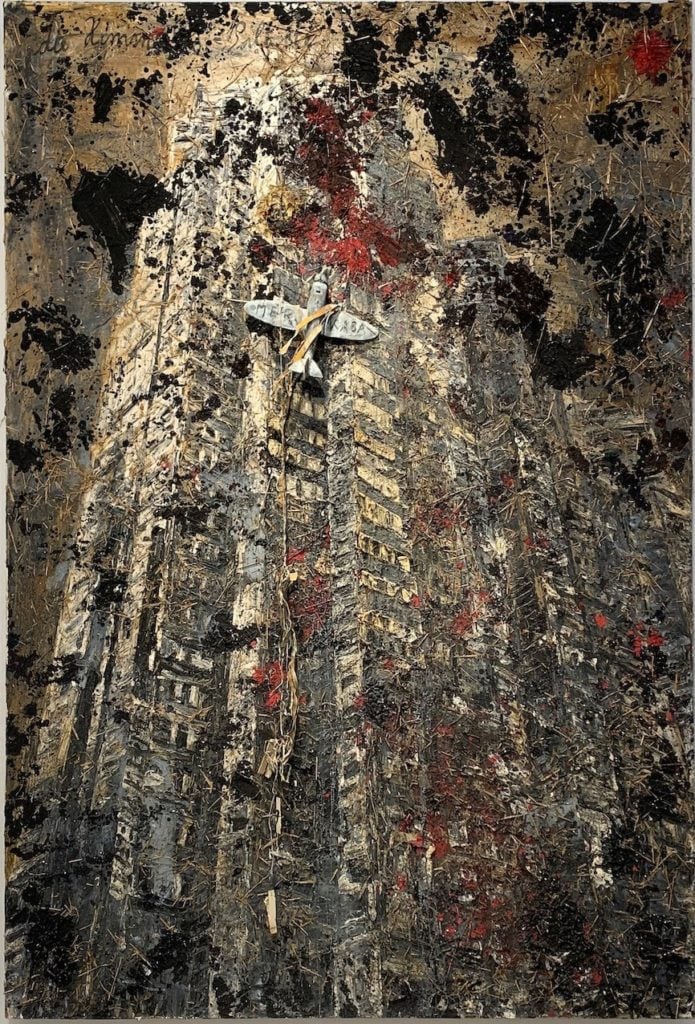
Anselm Kiefer, Himmelspaläste (1987–1991). Courtesy of Beck & Eggeling.
With Anselm Kiefer’s “Himmelspaläste” series, which he started at the end of the 1980s, he marked a change in his personal and artistic life. The artist shifted the focus of his work away from German identity and to Jewish mysticism and the Kabbalah. The architectural elements of his work from that series reminds me of Brazil, a 1985 dystopian science fiction film directed by Terry Gilliam.
—Alexandra Schott

Alex Chaves, Daffodil Tennis Court (2019). Courtesy of Martos Gallery via NADA.
Alex Chaves’ work titled Daffodil Tennis Court calls to mind the currently very overused meme caption: “Nature is healing.” Here, an amber field of golden daffodils is cut by lines that resemble a tennis court. Without the title, I would have first compared these lines to a camera’s viewfinder grid. The desire to capture the beauty of botany in a composed still life is an instinct for me that is heightened during this quarantine (quite honestly tired of taking pictures of my cat). This work and several others are part of Martos Gallery’s solo exhibition for the artist which you can view online on the gallery’s website and the NADA Member Galleries site on Artnet.com
—Cristina Cruz
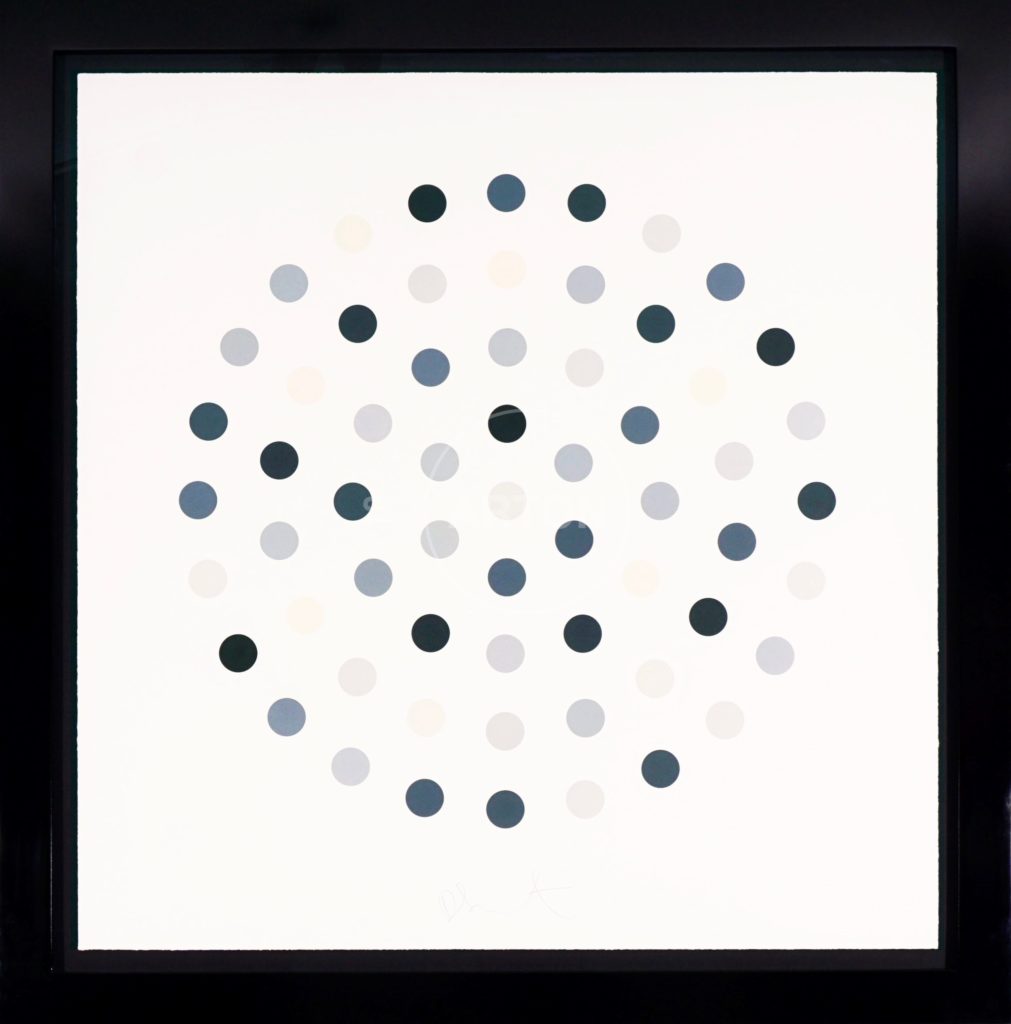
Damien Hirst, Grey Spots. Courtesy of Arton Contemporary.
Damien Hirst’s “Spot paintings” are among the artist’s most popular and sought after series. Damien Hirst’s systematic way of executing spot paintings is expressed well here — the repeated spots in various grey shades seems as though they were arranged by machine, not a person.
—Julia Yook
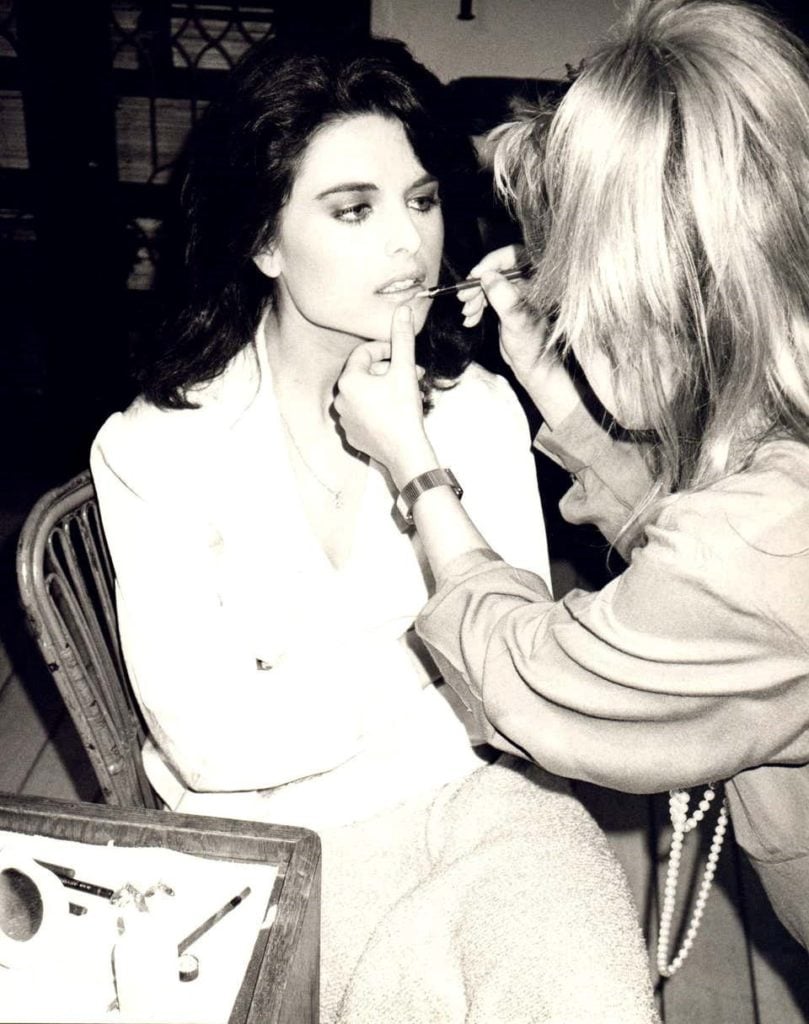
Andy Warhol, Photograph of Maria Shriver Before Her Wedding (1986). Courtesy of Hedges Projects.
Andy Warhol’s black and white photographs from the 1980s evoke a strong sense of glamour and nostalgia from the era. Here we see him capture a private moment in Maria Shriver’s life on a very important day making the viewer feel that it was he who was there taking pictures with a disposable camera.
—Neha Jambhekar
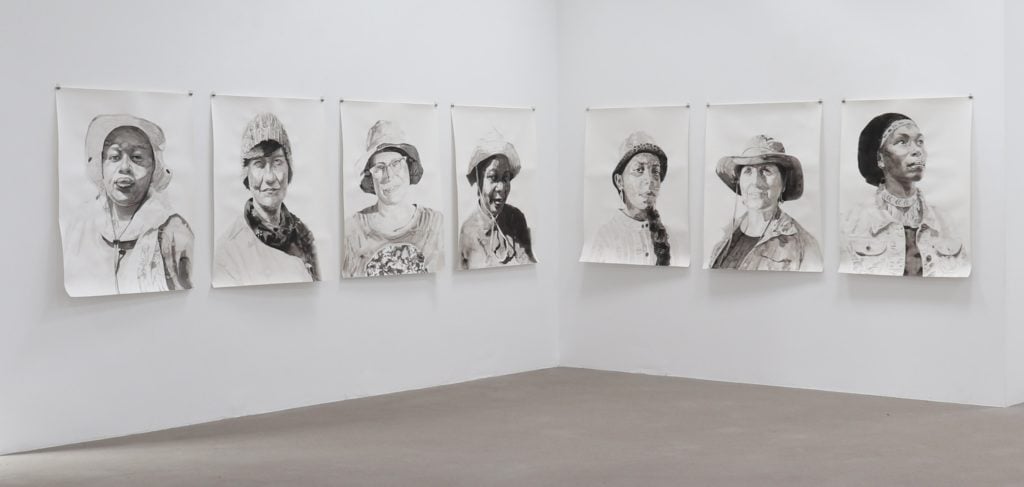
Tanya Poole, Researchers (2018). Courtesy of Galerie m.
In her multi-part work, Tanya Poole portrays female scientists whom she accompanied for several months. She’s titled each of the seven works with the name and profession of the larger-than-life portraits and thus de-anonymizes them. I particularly like the strength and knowledge that emerges from the women’s faces and how confident they look at the viewer, except for Khokela Camagu, a fossil excavator and preparator, who lets her gaze wander into the distance. In contrast to the portrayed strength, Tanya Pool’s materials are delicate, ink and paper, and creates an exciting contrast.
—Miriam Minak
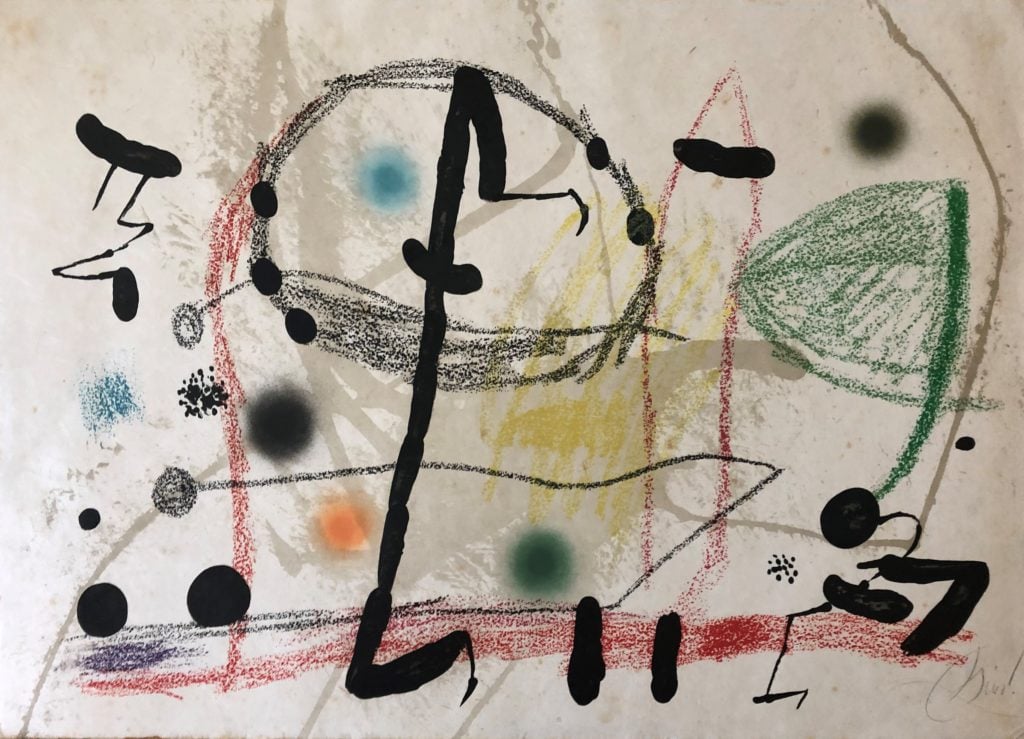
Studio of Joan Miró, Maravillas con Variaciones Acrósticas en El Jardín de Miró (1975). Courtesy of the Easton Art Galleries.
This lithograph was part of a set that Joan Miro produced in 1975 and originally illustrated a book by Spanish poet Rafael Alberti. The bright colors, with black forms remind of birds.
—Karin Petit
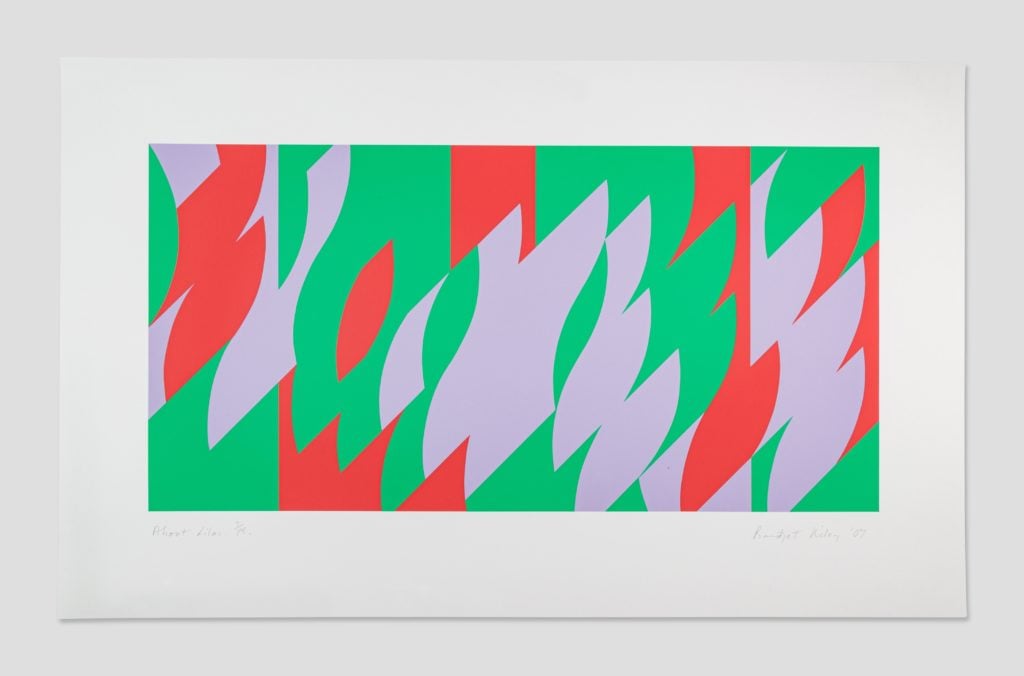
Bridget Riley, About Lilac (2007). Courtesy of Zane Bennett Contemporary Art.
Bridget Riley, one of the pioneers of Op Art in the 1960s, created works that explored the realms of perception and the human eye. This piece is exciting to me because of its use of vibrant colors and shapes that seem to move in and out of focus.
—Qadira Farrington
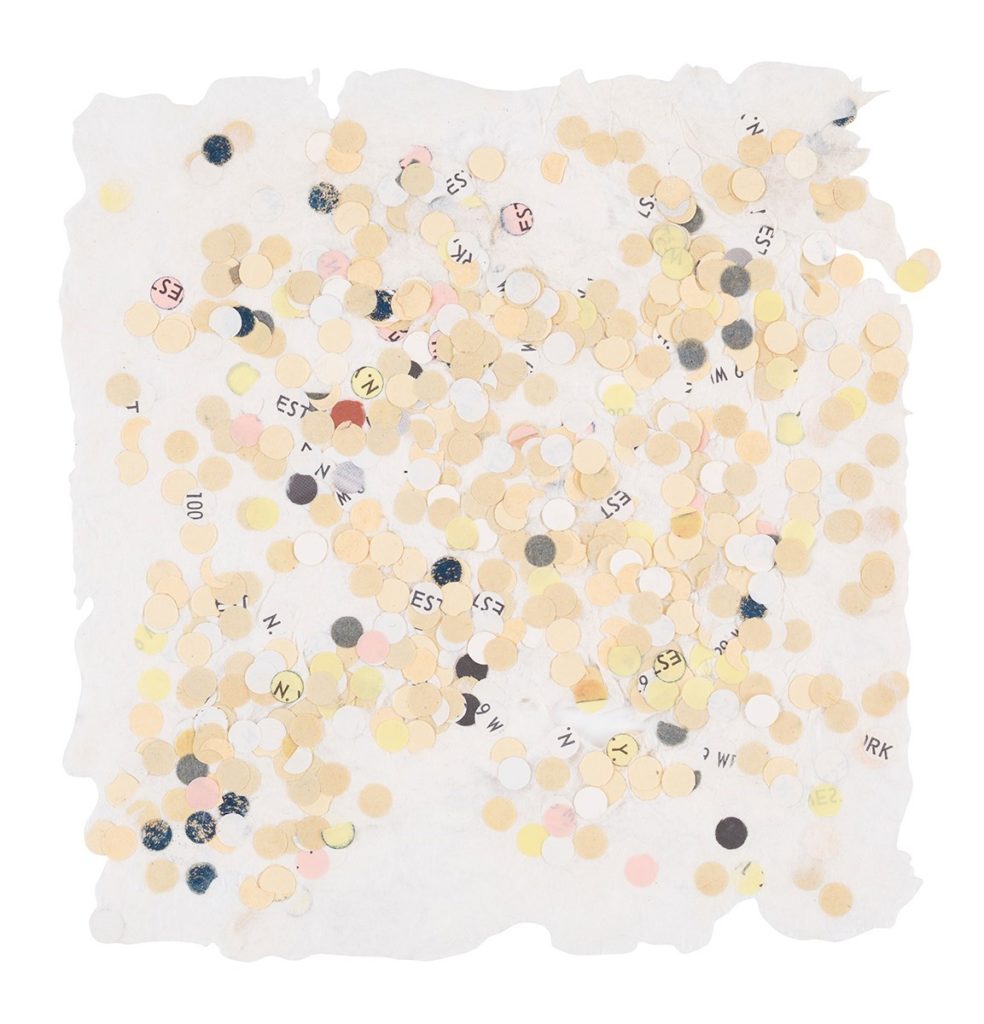
Howardena Pindell, Untitled (1973). Courtesy of Garth Greenan.
Howardena Pindell uses laborious repetition in her abstractions. The signs of her hand are present in every bit of the work, palpable in the accumulation and rearrangement of materials. The works are simultaneously airy yet full of topology, charming albeit emotionally so, and coarse. This small piece is a perfect lens of Pindell’s kaleidoscopic practice.
—Santiago Garcia Cano
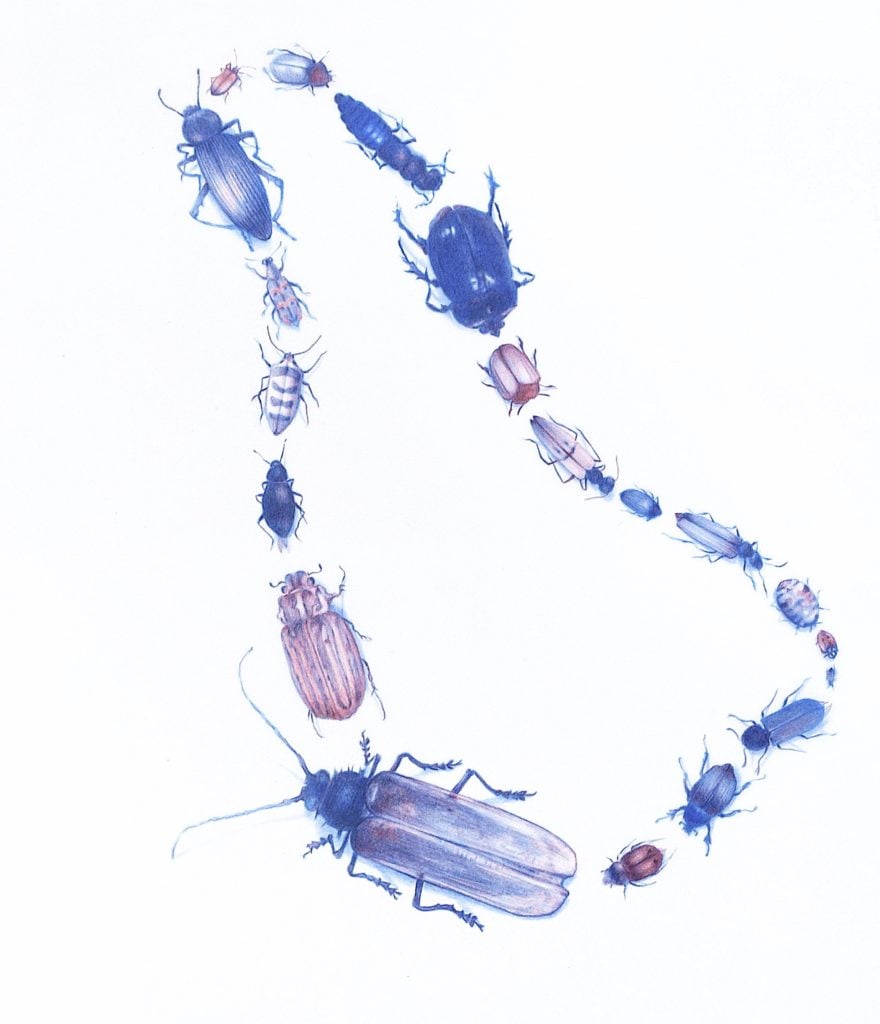
Zachari Logan, Beetles Mimic Necklace (2020). Courtesy of Little Bird Place.
Canadian artist Zachari Logan puts a cool modern spin on botanical illustration, giving it a surreal edge. In this piece, the shiny shells of beetles pose as precious gemstones in a necklace.
—Sara Carson
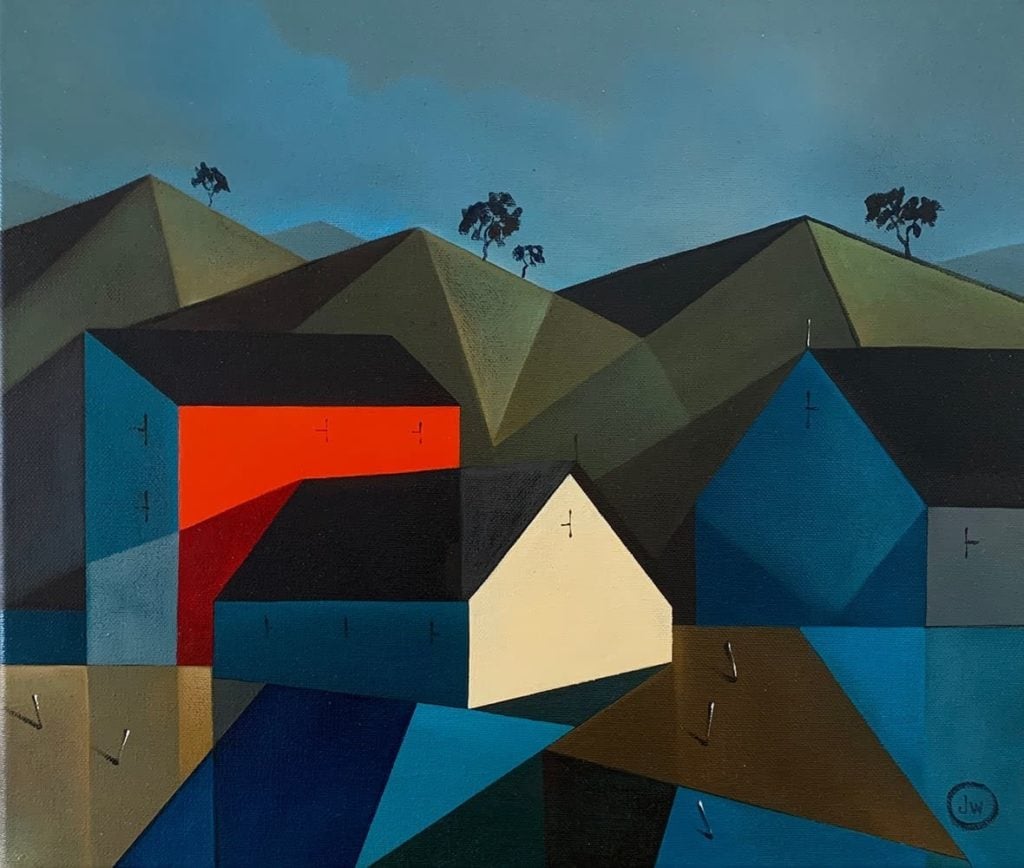
James Watkins, Cubist Light III (2020). Courtesy of International Art Centre.
James Watkins is one of New Zealand’s most successful young artists. Since leaving the Elam School of Art in 2005 he has been represented exclusively by International Art Centre. During the last 15 years his works have been acquired and commissioned by clients and collectors worldwide and James has aptly been christened an ‘art star. Both large- and small-scale works, including his unique ceramic spheres, feature the trademark Watkins’ “Red Roof/Blue Roof” series of contemporary landscapes.
In 2019 Watkins created a stunning new series of works confidently exploring the sophisticated realm of cubism. His solo exhibition in April of that year was a complete sellout. This latest collection of paintings saw Watkins transform a tapestry of brilliantly balanced, toned and shaded cubes of color into stylish landscapes and still lifes. These paintings, so full of light and shade, are truly intriguing. By both retaining and refreshing the palette and essence of earlier works, Watkins constantly presents us with unique and original works.
—Yi Zhang